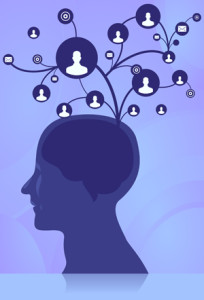 Cognitive Behavioral Therapy, or CBT, is a branch of pschotherapy that focuses on the ways in which thinking influences behavior. This form of therapy is often used to treat issues such as depression, anxiety, phobias and addictions, according to the Mayo Clinic. CBT is not often a long-term therapeutic approach. The focus is usually on a very specific issue and clients are taught tangible strategies to counteract their negative thought patterns in order to end the cycle of unhealthy behavior.
Cognitive Behavioral Therapy, or CBT, is a branch of pschotherapy that focuses on the ways in which thinking influences behavior. This form of therapy is often used to treat issues such as depression, anxiety, phobias and addictions, according to the Mayo Clinic. CBT is not often a long-term therapeutic approach. The focus is usually on a very specific issue and clients are taught tangible strategies to counteract their negative thought patterns in order to end the cycle of unhealthy behavior.
Basics of Cognitive Behavioral Therapy
The guiding principle behind cognitive behavioral therapy is that our thoughts and feelings have a direct influence on our actions and beliefs. For example, a woman who continually tells herself she is not worthy of positive things in her life will likely fail to pursue opportunities that would benefit her, because she doesn’t feel that she deserves them. Cognitive Behavioral Therapy strives to teach patients that these views are not realistic and to offer alternatives to unhealthy thought patterns. This is known as “reframing” one’s thoughts. CBT also teaches that, although they cannot control events, clients can control the way they think about and respond to those things.
Since it is a short-term based therapy and addresses a number of issues, CBT has become quite a popular option for those seeking help with mental health problems. This school of therapy has been proven effective and is trusted by the mental health community. It’s important to understand that CBT is not one single technique of psychotherapy. It’s a term that encompasses various schools of thought, including Rational Emotive Behavior Therapy, Cognitive Therapy and Multimodal Therapy.
What to Expect With Cognitive Behavioral Therapy
If you are experiencing difficulties throughout multiple aspects of your life due to unhealthy thinking or other issues, you may consider yourself a candidate for CBT and wonder what to expect during sessions. The first thing a therapist will do is help you to identify your negative beliefs or thought patterns, as well as the behaviors they influence. This process is known as functional analysis and is an important teaching opportunity to help you understand the ways in which your thoughts are negatively affecting your life.
The second stage of therapy looks at changing actual behaviors. Coping mechanisms and strategies are taught that you can then put into practice in your real life. Some examples of mechanisms taught include reframing thoughts, relaxation exercises and positive social skills, among others. You will be given homework assignments in which you will be asked to take what you’ve learned in therapy and practice it in real life situations.
Practical Uses of Cognitive Behavioral Therapy
As mentioned, Cognitive Behavioral Therapy is used in the treatment of a number of mental health disorders like anxiety, depression, addiction and phobia. CBT is a therapy that requires clients to be able to take an honest look inward in order to make changes. In order for the tools of therapy to work, you have to be willing to allow yourself the discomfort involved in analyzing your problems and confronting your thoughts. This is a useful form of therapy if you are able to do these things and are seeking an approach from which you can benefit quickly. Though it is a short-term treatment approach, CBT teaches coping skills that will benefit you for a lifetime.
Related Resource: Aversion Therapy
Cognitive Behavioral Therapy may not be for everyone, but it has been thoroughly researched and proven to be useful in the treatment of many mental health issues.




